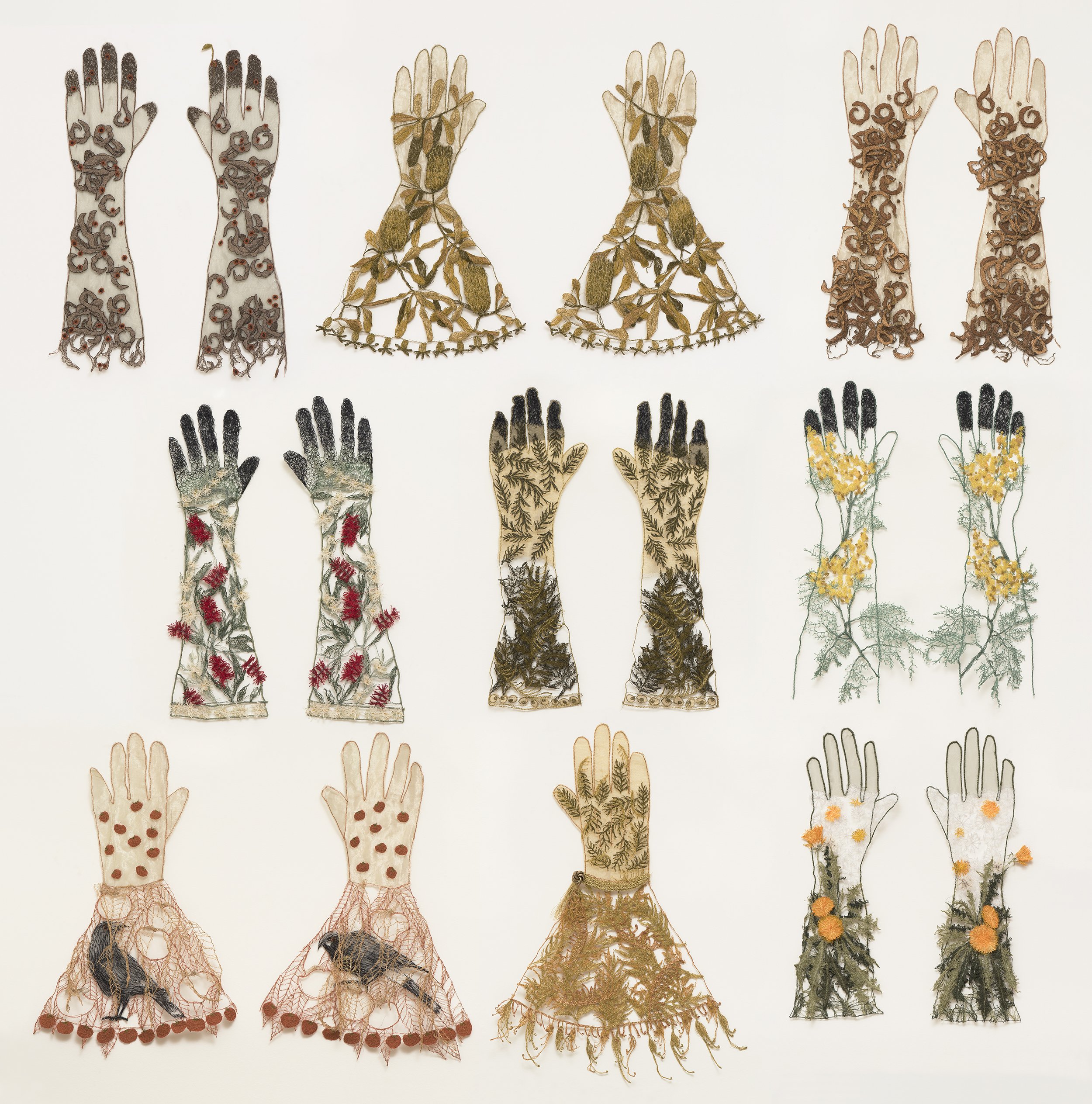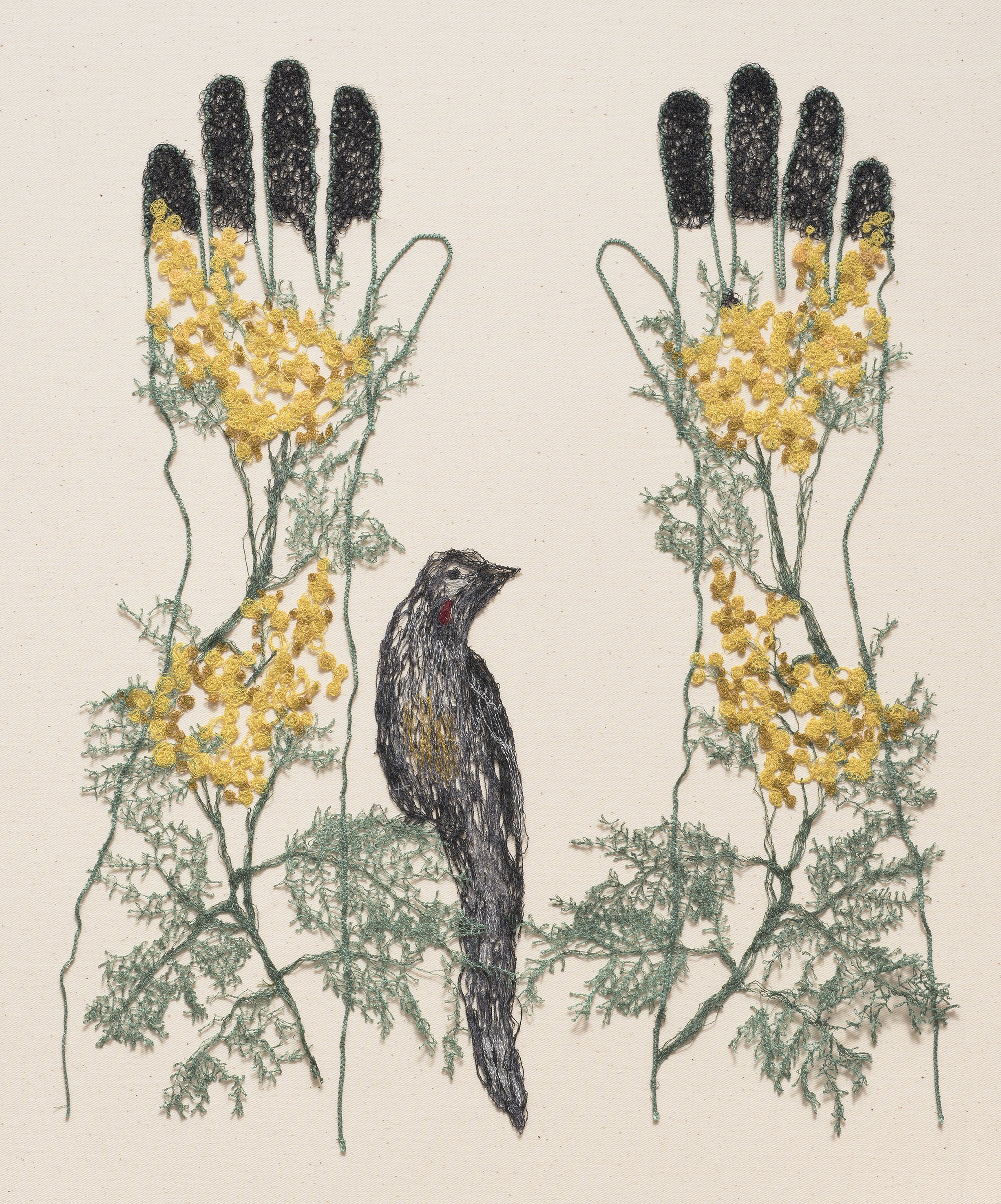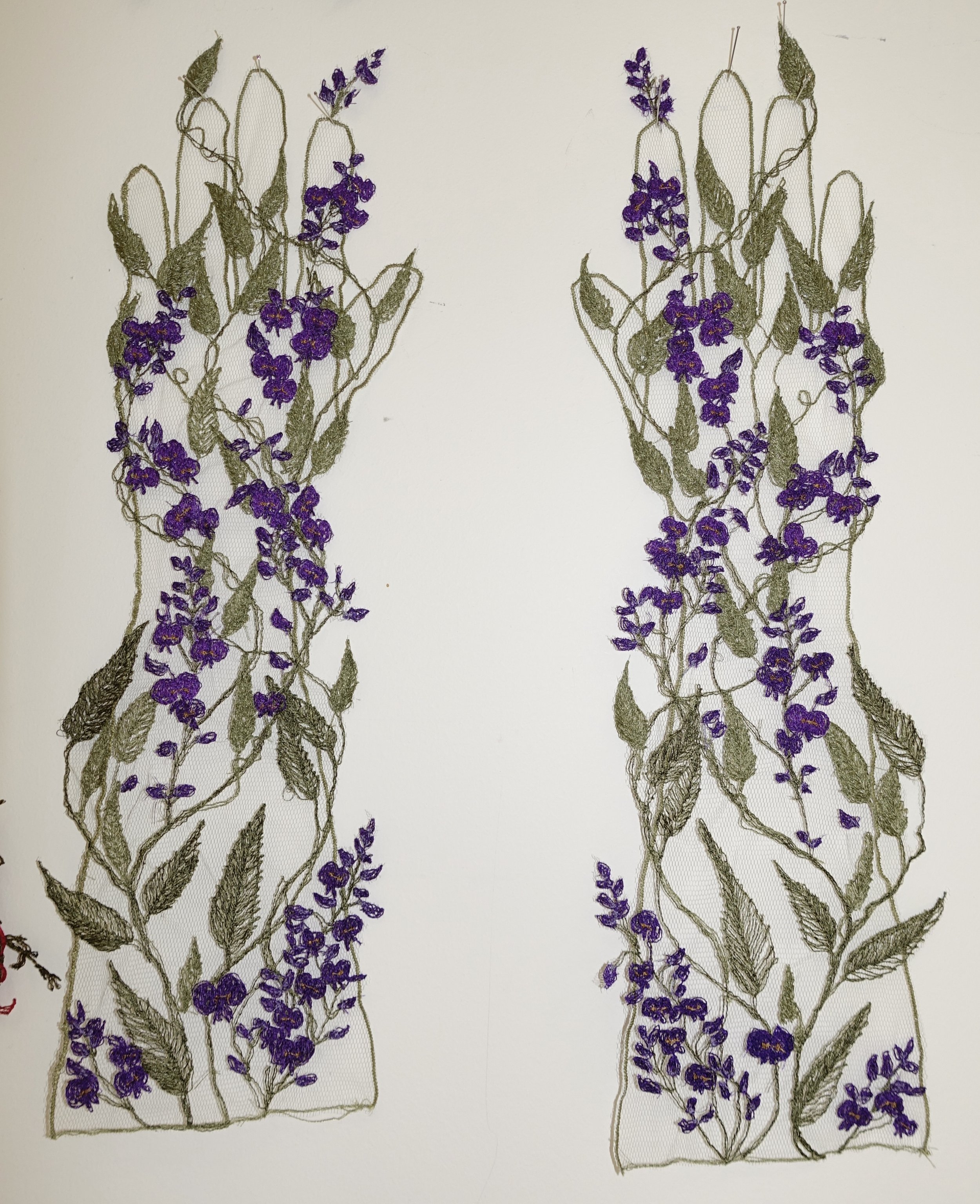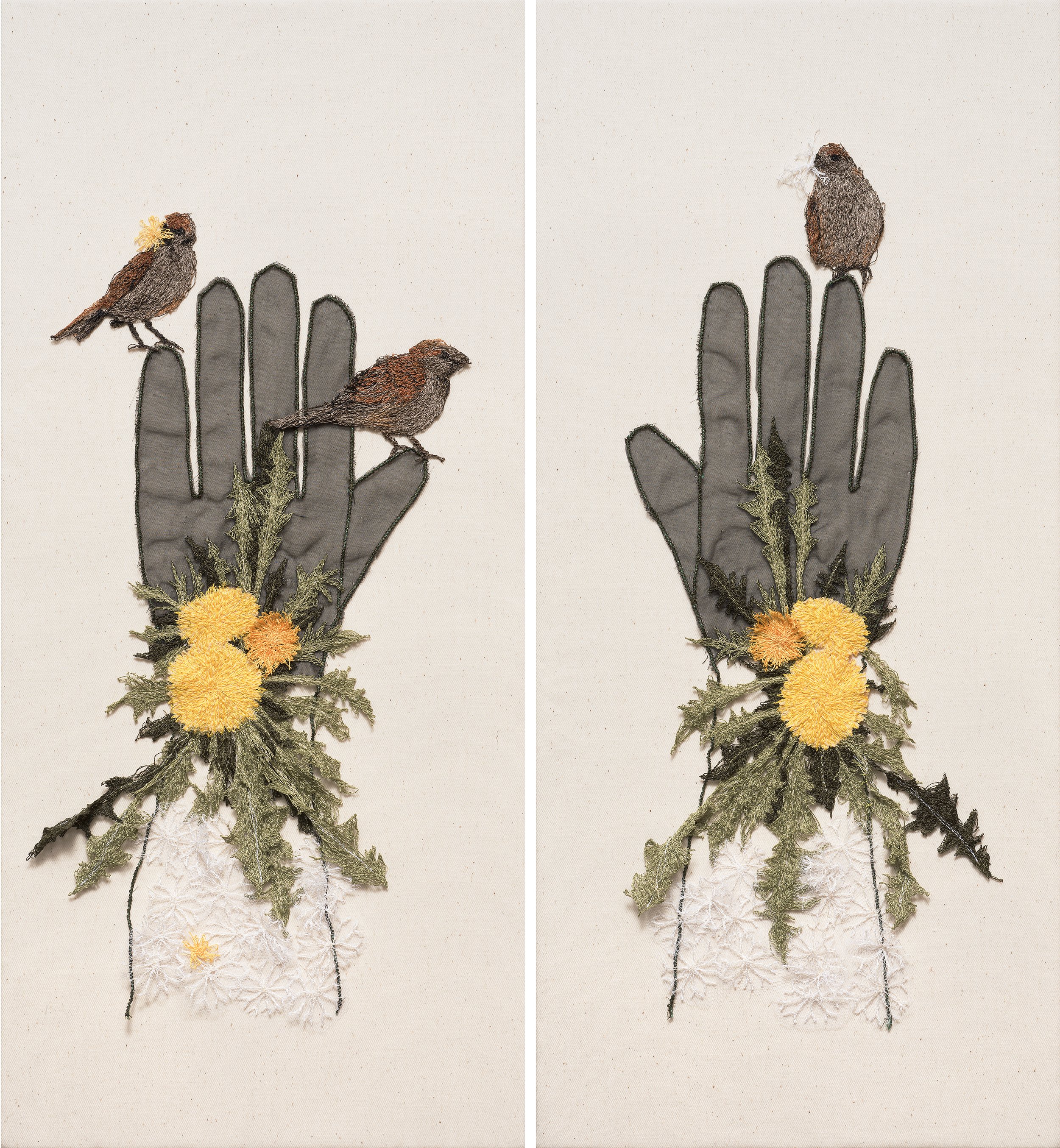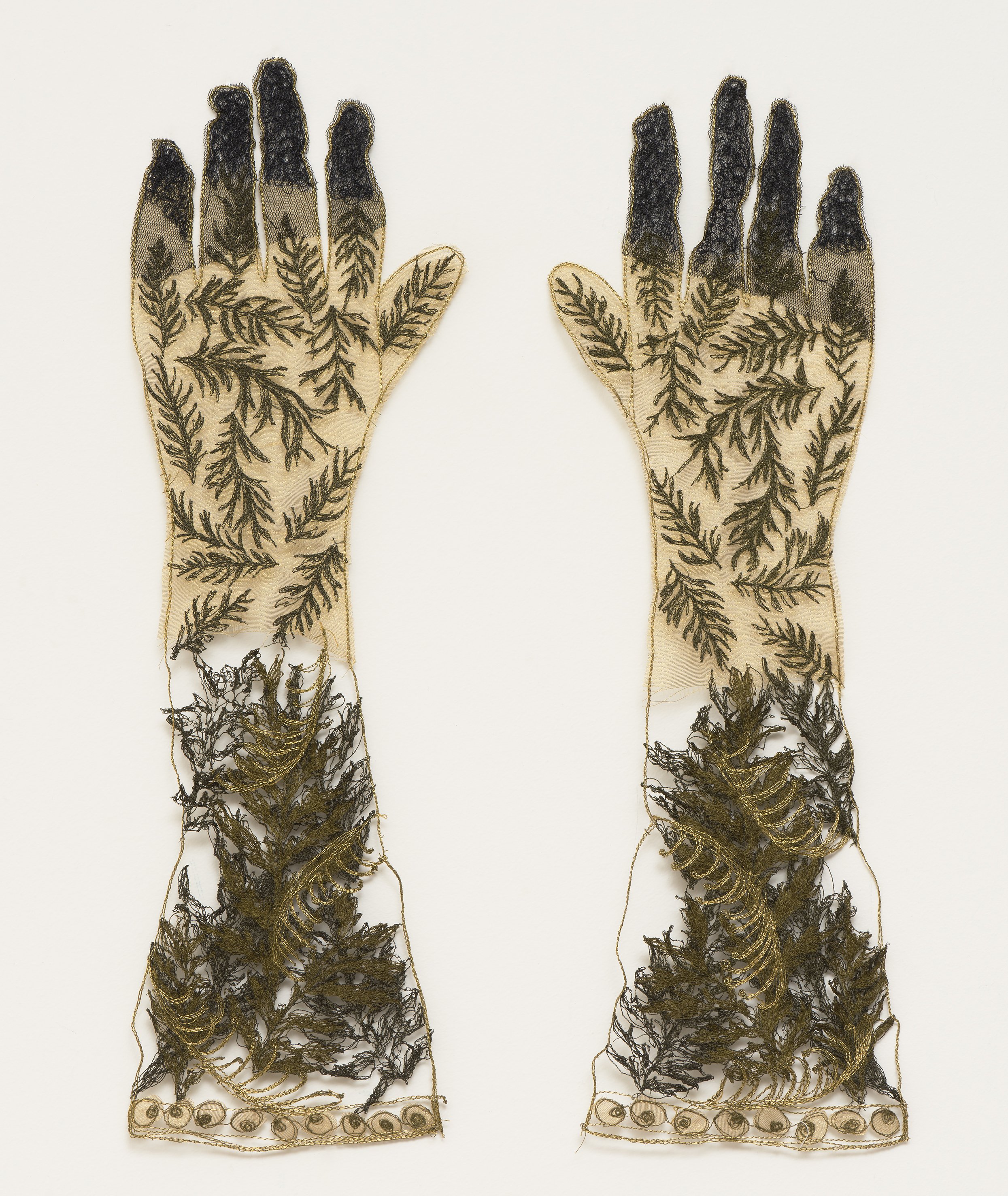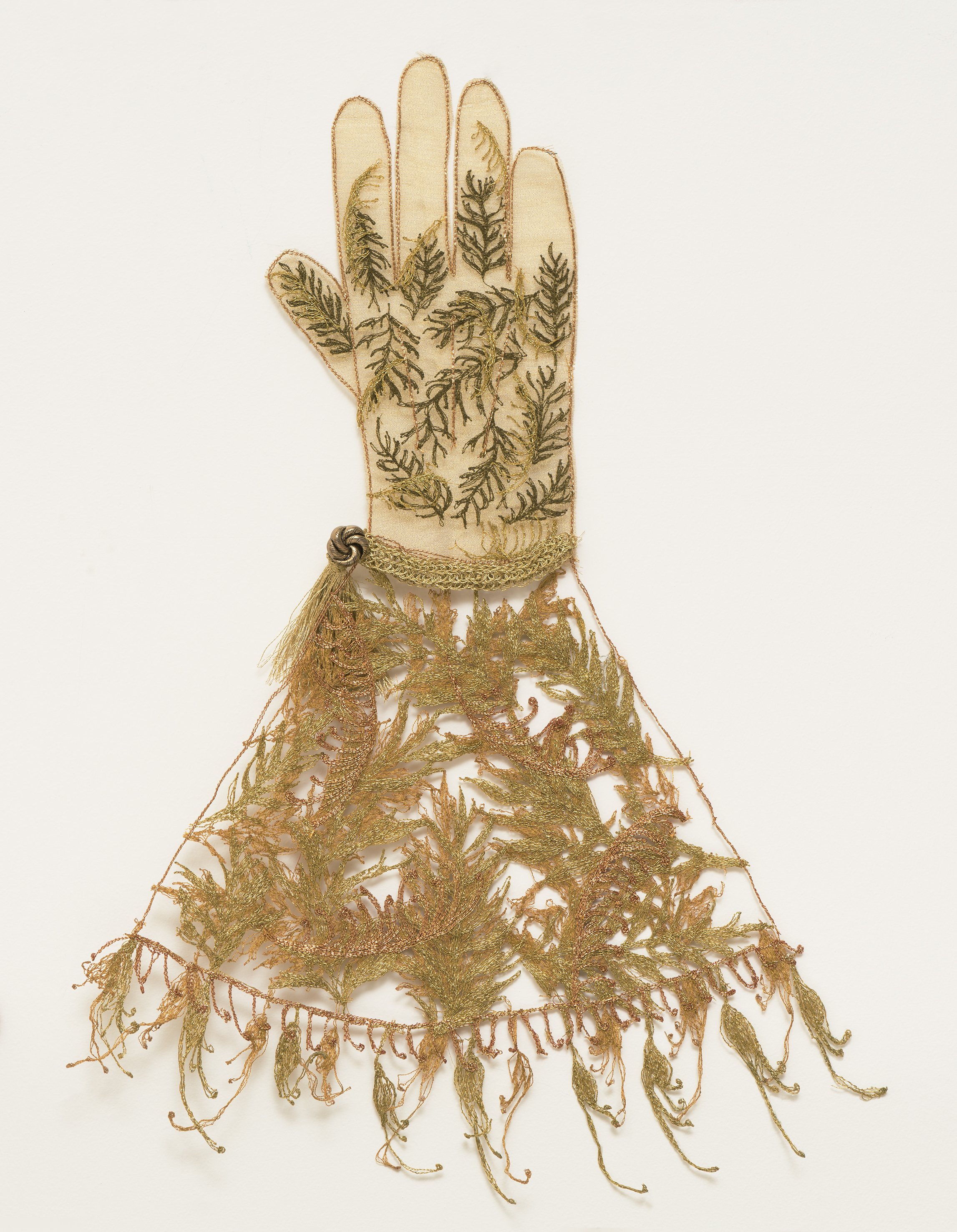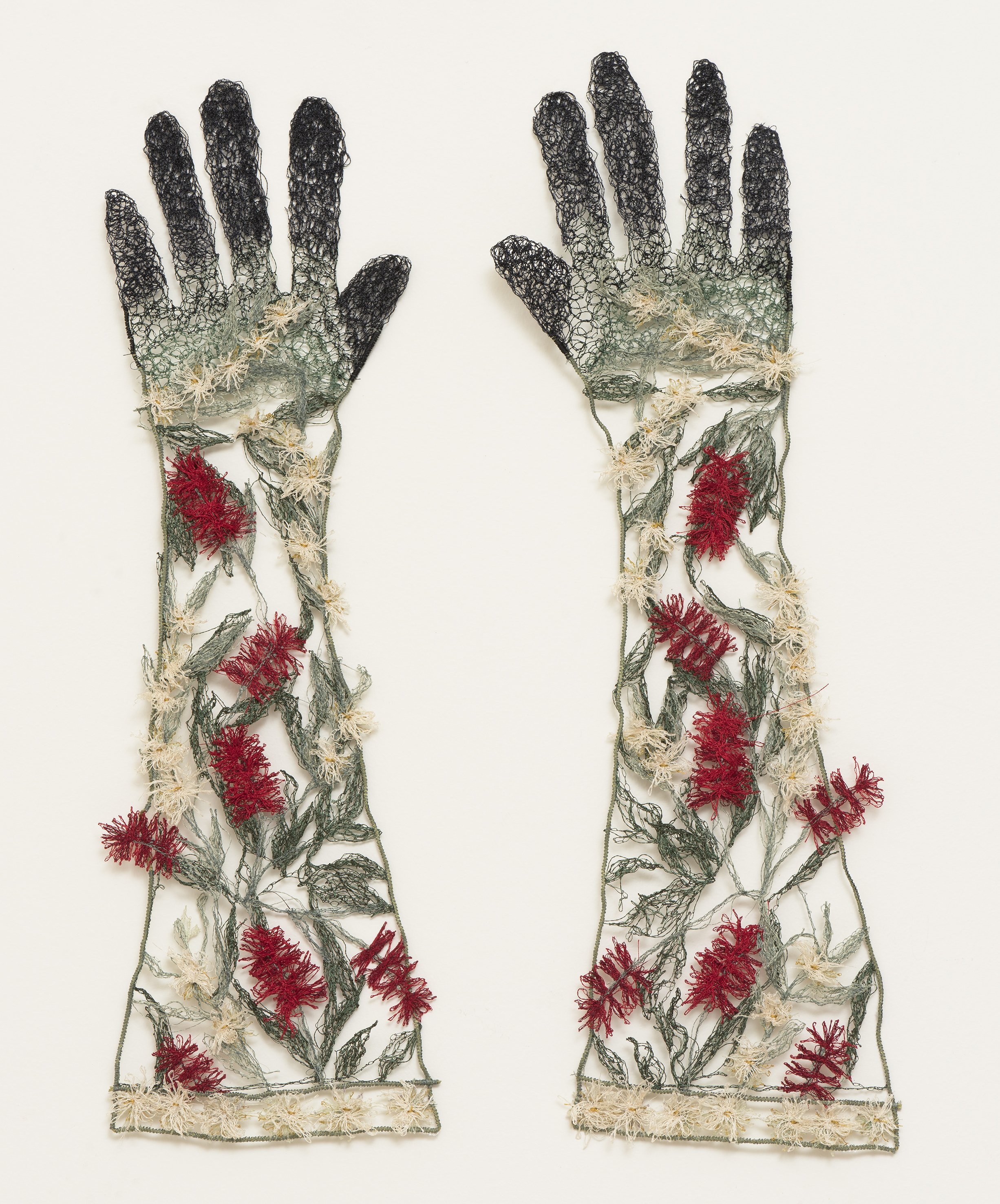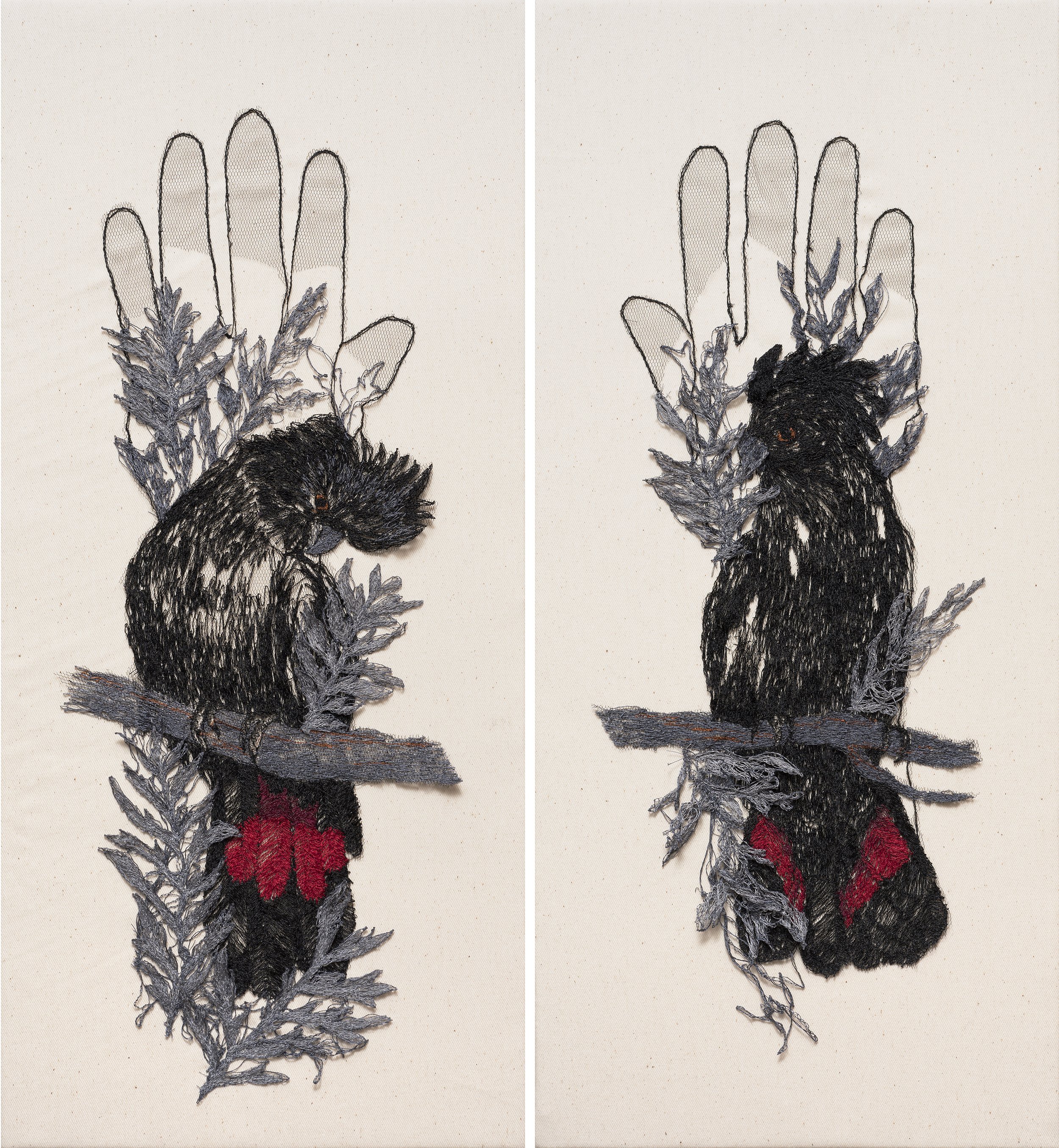Gloves
My work explores plants and gardens: the inner secret garden, artists’ gardens, public gardens, national parks as gardens and gardens of the imagination. Fragility of both the environment and the human condition is reflected in the medium. I use my work, embroidery, as a metaphor for repair. In thinking of very large historic embroideries, such as the Bayeux Tapestry, the marks of stitchers, restorers and menders stand to illustrate the repair, care and protection that is required for the environment.
The series of Gardening Gloves emerged during the Covid-19 Lockdown in 2020. Working in the garden was a displacement activity from the high demands of the studio. However, rough dry work hands and fine hand embroidery was difficult. Looking at my hands I realised, as a maker, that they are one of the most important organs. The tub of gardeners’ protective ointment in the bathroom, regularly rubbed into my hands both before putting on work gloves and after, became a routine.
Protecting hands. Hiding the hands away from the dirt.
Sitting in the garden, drinking a cup of tea, my regular visitor, a Willie wagtail, moved around my discarded gloves. I spoke to her as I usually do, watching her wag her tail. Her scratchy ‘chucka chucka chucka chucka!’ answered me. Her approval of my digging around, turning over the soil for her to pick over seemed apparent.
My gloves retained the memory of my own body. I drew the three-dimensional shapes of fingers and palms. These were then translated into embroidered works incorporating the seasonal plants at hand and the birds. Research into gloves set me on a new path of discovery, bringing in previous thoughts and imagery. Gloves are rich with metaphoric value and have great decorative potential. Moving from objects to be worn for protection, to political statements of wealth and elitism, to subjects as artwork, reflected the importance of stitch. Stitching is visible and key to the aesthetics of gloves.
In coming to the CraftACT Residency, I was interested in observing first-hand how national parks are crafted, often by hand, to manage nature and how conditions need to be manipulated in order to not lose such unique environments such as the Namadgi National Park. In one sense the artificial, hands-on management of nature, how we manage nature politically and economically, are incredibly important at this time in the Age of the Anthropocene.
Gardening gloves were the right vehicle for thinking about the environment. Out at Namadgi, I returned to the writings of eco-feminist Val Plumwood. She noted how we battle in with our colonial-influenced gardens as we fight off the pests, struggle with the unwanted plants and battle with reducing the biodiversity of our vegetable plots.
Walking everyday through the landscape surrounding Ready Cut Cottage I marvelled at the regeneration of the land. Water was abundant, wildlife passed by constantly and the growing season was apparent. Sure, the weeds were abundant, and the blackened landscape was dominant, but seeking out the wildflowers and native grasses became my focus. The daily visits of the Willie wagtail, proclaiming her territory from the fence posts, calling to her mate, swooping on the multitudinous cabbage moths and dancing away, drew me back to the idea of gloves.
